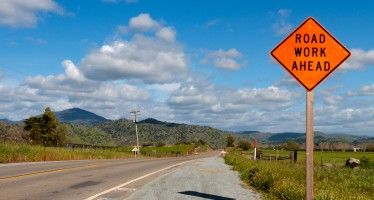Southern Califiornia’s new pact with the Delta water devil
By Wayne Lusvardi
If you dine with the Sacramento Delta water devil, you better have a long spoon.
That might be the lesson that Southern California should have learned after being stuck with a $283 million bill to bail out Gov. Jerry Brown’s embarrassing boondoggle in failed Northern California geothermal power plants when he was governor from 1975 to 1983.
On July 25, Brown reciprocated Southern California water ratepayers for bailing him out of a past political jam by offering them a pricey but downsized water tunnel through the California Delta, no guaranteed entitlement to water and 75 percent of the costs in his proposed Bay-Delta Conservation Plan.
The Plan includes a whopping $14 billion cost to convey water to Southern California through 37-mile tunnels under the Sacramento Delta. Habitat re-creation would cost an additional $10 billion.
The basic idea of the Bay-Delta Conservation Plan is to bring excess water in wet years through the Delta for storage in reservoirs and water banks for use in dry years by farms and cities.
(For clarification, the governor’s Bay-Delta Plan is not the same as the proposed $11.1 billion California Water Bond bond pushed out to the 2014 ballot cycle. The bond would fund a new reservoir and scattered water projects around the state.)
The Details
As it is often said, the devil is in the details. Only the costs of the proposal for a “Through-the-Delta Tunnels” project are being discussed. But it is total system costs that need to be focused on. The important facets of the Delta Plan are as follows:
1. Two Through-the-Delta Tunnels would convey 75 percent of the water to Central Valley farmers and 25 percent to Southern California cities. However, Southern California cities would pick up 75 percent of the cost and the Central Valley farmers 25 percent. The disproportionate share of the costs to Southern California water ratepayers would run against the intent of Proposition 218 to require voter approval for new taxes.
2. The proposed tunnels have been shrunk by 40 percent in size and the number of pumps reduced from five to three.
3. Legal guarantees on the amount of “new entitled or assured water” for Southern California are not in the plan. Southern California presently has a maximum legal entitlement of 2 million acre-feet of water in a dry year (enough for about 4 million households per year).
4. According to economist Jeff Michaels, the maximum proposed conveyance of 6.5 million acre-feet of water has been reduced to 5.5 million acre-feet. This makes the project a bad investment and possibly unfinanceable. Michaels indicates that tunnel project costs exceed benefits by $7 billion.
5. The only guarantee in the Delta Plan is that there would be no water diverted for fish or natural disasters such as an earthquake. This is called “water assurance.”
6. Neither Southern California cities nor Central Valley farmers would get any added water storage reservoirs out of this deal. Any new reservoirs would have to be funded from the proposed $11.1 billion Water Bond scheduled for the 2014 ballot.
7. The cost of the Delta Plan does not include the $4 billion already allocated for levee improvements under Proposition 1-E, approved by voters in 2006. About $3 billion of that has already been spent on flood levee upgrades, with a $1 billion balance unspent.
8. The actual total cost would be $39 billion: $14 billion for tunnels, $10 billion for habitat re-creation, $4 billion for levee repairs and $11 billion for reservoirs and other statewide water system improvements. Bond interest costs would add about another 35 percent, resulting in a total cost of about $53 billion. Assuming Southern California water ratepayers would incur 75 percent of the cost that, would reflect about $40 billion.
9. Assume a total project costs to Southern California water ratepayers of $29 billion at a 4.375 percent stated bond interest rate. Then the added cost to water bills would be about $20 per month for each of about 7.2 million households in Southern California. That would equate to a water rate increase of about $240 per household per year for 35 years.
10. Funding sources for habitat re-creation have not been established in the Delta Plan package yet.
Such a deal!
If you were Southern Californian, would you take this costly deal that doesn’t guarantee you any set maximum of water, in exchange for a water rate increase of about $240 per year to each of your customers? The new plan merely assures that there will be no interruption of water deliveries due to the cyclical shrinking of fish populations.
Brown has said he does not need to go to voters to raise taxes to fund the plan. This is because water districts, mainly in Southern California, would raise rates to pay off the bonds that would finance the project.
The actual construction of the Through-the-Delta Tunnels would take 10 years. Moreover, there is no guarantee at this early stage that the tunnel project would ever get built due to the threat of environmental lawsuits.
As Laer Pearce, a land development public relations consultant, told me in an email, “Moving forward with the tunnels is the trump card to force the funding for habitat restoration … just as blocking the funding is the trump card to stop the tunnels. Ah, Crazifornia!” (Crazifornia is the name of Pearce’s blog, and of soon-to-be-published book of his on the state.)
The proposed tunnel project doesn’t meet a cost/benefit test and would contain no guarantees. This raises the question of whether the plan offers any real advantages over the “no project” alternative?
In the past, it took a crisis to overcome the North-South resistance to doing any water deal. In the 1960s, the loss of life due to Delta flooding created enough of a crisis to get legislators to approve funding for levee repairs and Southern California got some water out of the deal.
Today, the crisis is somewhat hypothetical: an earthquake that could collapse Delta levees and canals of the California Aqueduct in a Katrina-like disaster. But if an 8.0 Richter-scale earthquake hits the Delta, it is unlikely any engineering design could withstand the impact.
If Southern California is going to bargain with the Sacramento Delta water devil, it first had better find a very long spoon.
Related Articles
McClintock, Zetland wage CA water war
March 25, 2013 By Wayne Lusvardi In California, water wars are fought not merely over water but over water ideology
CA GOP flexes Sacramento muscle on road repairs
In a move that handed Sacramento Republicans a sudden share of power, state legislators finally turned their attention to California’s deteriorating infrastructure.
2014 promises water fight over Delta tunnels
Gov. Jerry Brown’s proposed twin tunnels under the California Delta will continue to be a major policy issue throughout 2014





